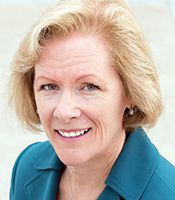 “COVID-19 relief dollars provided by both federal and state government have been nothing short of a lifeline for our Connecticut nursing homes hit hard by the pandemic and now on a pathway toward recovery, but a longer bridge or recovery period of support to the other side of the pandemic is needed beyond what was initially forecasted. Occupancy recovery is now the main issue in the elongated pandemic, and how staffing shortages are hindering occupancy recovery is the same issue at both the federal and state level.”
“COVID-19 relief dollars provided by both federal and state government have been nothing short of a lifeline for our Connecticut nursing homes hit hard by the pandemic and now on a pathway toward recovery, but a longer bridge or recovery period of support to the other side of the pandemic is needed beyond what was initially forecasted. Occupancy recovery is now the main issue in the elongated pandemic, and how staffing shortages are hindering occupancy recovery is the same issue at both the federal and state level.”
—�Matthew V. Barrett, J.D., M.P.A., President and CEO, Connecticut Association of Health Care Facilities and Connecticut Center for Assisted Living
 “I believe the greatest challenge both in Idaho and nationally is the workforce crisis. We always knew that there would not be enough workers to support the Baby Boomers after 2030, but the pandemic has brought that crisis eight years earlier as millions have left the workforce.”
“I believe the greatest challenge both in Idaho and nationally is the workforce crisis. We always knew that there would not be enough workers to support the Baby Boomers after 2030, but the pandemic has brought that crisis eight years earlier as millions have left the workforce.”
—�Robert Vande Merwe, Executive Director, Idaho Health Care Association
 “The predations of national staffing agencies threaten to destroy long term care in New Hampshire and nationally. Having a staffing agency in your building is like inviting in a vampire.”
“The predations of national staffing agencies threaten to destroy long term care in New Hampshire and nationally. Having a staffing agency in your building is like inviting in a vampire.”
—�Brendan W. Williams, M.A., J.D., President and CEO, New Hampshire Health Care Association
 “The pandemic represents the greatest threat to the industry in its history. But with every threat, there exists the chance for opportunities. The crisis should be the clarion call to stakeholders beyond the industry who were already painfully aware of staffing shortages. The lack of supply of health care professionals in the country because of increased competition, the aging of the existing workforce, and traditionally lower wages and health benefits in the long term care industry will add to the challenge.”
“The pandemic represents the greatest threat to the industry in its history. But with every threat, there exists the chance for opportunities. The crisis should be the clarion call to stakeholders beyond the industry who were already painfully aware of staffing shortages. The lack of supply of health care professionals in the country because of increased competition, the aging of the existing workforce, and traditionally lower wages and health benefits in the long term care industry will add to the challenge.”
—�Cheryl Heiks, Executive Director, Delaware Health Care Facilities Association
 “I believe nationally, the greatest issue facing long term care is a true lack of understanding of the economic and societal role the nursing home profession serves in communities (urban and rural) across the country. They are the support for a disappearing safety net as the population over 65 grows faster and the availability of family caregivers declines. In communities across the country, nursing homes are among the top employers, nationally generating billions of dollars in labor income, state and local tax revenues.
“I believe nationally, the greatest issue facing long term care is a true lack of understanding of the economic and societal role the nursing home profession serves in communities (urban and rural) across the country. They are the support for a disappearing safety net as the population over 65 grows faster and the availability of family caregivers declines. In communities across the country, nursing homes are among the top employers, nationally generating billions of dollars in labor income, state and local tax revenues.
“The biggest short-term issue facing long term care in Texas is the inevitable expiration of the federal public health emergency and the end of Medicaid add-on in place that has served as a lifeline for long term care. Long term, the biggest issue in Texas is the lack of a predictable Medicaid policy that pays for actual costs of care, adjusts to the growing acuity needs, and ensures the availability of resources to provide the highest quality of care our residents/
patients deserve.”
—�Kevin Warren, President and CEO, Texas Health Care Association
 “Workforce availability is the biggest issue—it has always been a small concern, but current labor market competition, suppressed wages, and a decreasing number of eligible workers have created a workforce crisis that is not easily resolved. Simply legislating or regulating workforce standards does not solve this problem; rather, significantly increasing wages and benefits to entice workers to join and stay in the long term care profession as a valued career is essential to avoid collapse of this sector.”
“Workforce availability is the biggest issue—it has always been a small concern, but current labor market competition, suppressed wages, and a decreasing number of eligible workers have created a workforce crisis that is not easily resolved. Simply legislating or regulating workforce standards does not solve this problem; rather, significantly increasing wages and benefits to entice workers to join and stay in the long term care profession as a valued career is essential to avoid collapse of this sector.”
—�Patti Cullen, CAE, President and CEO, Care Providers of Minnesota
 “The biggest issue facing our sector nationally is funding, which affects all areas of a quality delivery service, especially access to care in rural America. The biggest issue facing our state is workforce, in particular the shortage of nurses.”
“The biggest issue facing our sector nationally is funding, which affects all areas of a quality delivery service, especially access to care in rural America. The biggest issue facing our state is workforce, in particular the shortage of nurses.”
—�Rachel Bunch, Executive Director, Arkansas Health Care Association and Arkansas Assisted Living Association
 “No question that in Wisconsin and nationally the biggest issue is workforce. Our members are continually challenged to maintain adequate staff coverage in all operational areas so that they can continue to deliver the high quality care that our seniors and folks living with disabilities expect and, indeed, deserve.”
“No question that in Wisconsin and nationally the biggest issue is workforce. Our members are continually challenged to maintain adequate staff coverage in all operational areas so that they can continue to deliver the high quality care that our seniors and folks living with disabilities expect and, indeed, deserve.”
—�Rick Abrams, CEO, Wisconsin Health Care Association/Wisconsin Center for Assisted Living
 “At both the state and federal level, the biggest issue facing the long term and post-acute care sector will be securing a seat at the table for policy, regulatory, and legislative discussions. As we continue to see new reform after new reform introduced by CMS and state legislatures throughout the country, we’ll need to ensure long term care providers can share their expertise and experience to help shape policy. Otherwise, the future of our industry will be dictated by those who never spent a single day on the front lines of the COVID-19 pandemic and who couldn’t possibly understand the challenges we face.”
“At both the state and federal level, the biggest issue facing the long term and post-acute care sector will be securing a seat at the table for policy, regulatory, and legislative discussions. As we continue to see new reform after new reform introduced by CMS and state legislatures throughout the country, we’ll need to ensure long term care providers can share their expertise and experience to help shape policy. Otherwise, the future of our industry will be dictated by those who never spent a single day on the front lines of the COVID-19 pandemic and who couldn’t possibly understand the challenges we face.”
—�Zach Shamberg, President and CEO, Pennsylvania Health Care Association